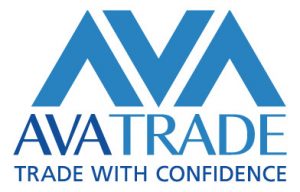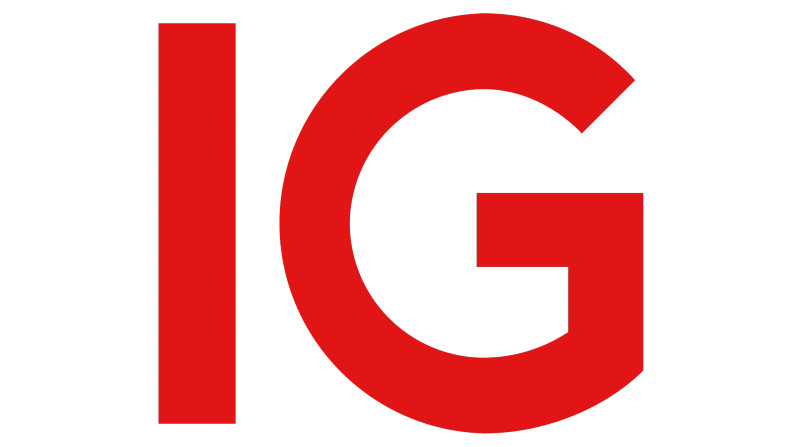Disclosure: Privacy Australia is community-supported. We may earn a commission when you buy a VPN through one of our links. Learn more.
Best Copy Trading Platforms

It’s not quite the same thing as having a computer connected to Warren Buffet’s laptop, replaying all of his decisions made over morning coffee while he reads the Financial Times paper…
As we know it today most popularly, copy trading in the financial markets is the automated copying of positions that are opened and modified by a third-party individual.
The earlier form of it was copy-mirror trading, however, this method did not involve the actual connection of one trader’s funded account to the account of a copied investor.
Learn below, where I look at how copy trading was first developed, first through mirror-copy newsletters and later through virtual rooms (as well as studies on benefits of copy trading). But first, in this guide, we’re going to cover the best copy trading brokers.
Table of Contents:
- How We Choose our Platforms
- Best Broker: Copy Trading Australia – Our Reviews
- Buying Guide
- Risks of Copy Trading
- Difference Between Mirror Trading and Copy Trading
- FAQs
How We Choose our Platforms 📚
The following brokers were selected according to our research criteria. Remember that, with trading, it’s often the user and not the tool, so take time to know your strategy, adapt to your chosen service and use good financial common sense.
That said above – never was there a greater exception to this rule than with copy trading. In this arena, there are few Titans who control the space.
And of all the goliaths, none stand taller than:
1. eToro – Best Overall Copytrading Broker
Key Features:
- Account funding minimum: $50
- Availability of crypto coins: 52
- Most-requested copy trading tool
- Thousands of assets: crypto shorts, EFTs
- Indexes include: NASDAQ 100, AUS 200, and SPX 500
- Since 2021 has over 20 million users
Pros
- Recommends sectors, e.g. driverless cars; bundle together multiple assets
- Trade tons of conventional and fringe asset types
- Powerful social trading
- Match moves of a community of traders and investor
- Large online social network
- Social feeds display ideas, and discuss trading decisions
Cons
- Network fees vary
📓 Reputation
⭐ The basic fact is you should use eToro if you want the best, true copy-trading…
eToro seized the opportunity and the others are still playing catch-up, or not bothering at all (example: some big brokers like CMC Markets and Capital.com offer no copy trading at all). So while I’ll offer some other names, keep in mind that – if copy trading is your key focus – you may as well click this link and create an eToro account.
There are no management fees, nor are there ticketing fees, stamp duties, or markups for using the app to trade. Add to that: no deposit fees (note that conversion fees do apply, however, for Australian dollars to U.S. dollars. As well as normal trading costs.
Smart Portfolio / CopyPortfolios: these investment portfolios are bundles of multiple assets, such as ETFs, stocks, forex, cryptocurrencies, and more, which can even be grouped together according to preferred theme (self-driving cars, medical marijuana, etc) or strategy (more aggressive, more conservative). These give investors simplified exposure to wide-ranging and sometimes innovative sectors.
Portfolios themselves use a mixture of data science and machine learning – as well as eToro’s investment team – to tailor to the configuration of your account preferences. Basically, it’s running through billions of metrics and spitting out the driven investment strategies and fine-tunely curated by humans. The minimum on portfolios is higher than for bog-standard trading; however, it is quite low relatively speaking, at only $500 (it also has no management fees, compared to a regular portfolio management service).
There are lots of exciting prospects with the leading resource markets in the world. Oil is the number one most traded commodity on eToro.
Crypto advancements: Once upon a time, one of the biggest negatives of eToro was that it only had 17 different types of crypto coins. But now there are over 52, with bitcoin (BTC) as the number 1 most traded asset of any type across all the different exchanges and ranges of securities – including the forex and commodities like oil.
That said, let’s cover a few of the other options out there. In most cases, they’ll use a mixture of DupliTrade and ZuluTrade. These are workarounds that integrate into these trading tools as add-ons… But eToro has completely structured itself as a social trading tool, so it stands out from the rest. If you’re new to copy-trading, probably use eToro.
2. AvaTrade
Key Features:
- Commission fee: Yes
- Trading minimum: $100
- ZuluTrade and Duplitrade – tons of signal providers to choose from
- Thousands of assets: forex, crypto shorts, EFTs
- AvaSocial recommends investment strategies
- Most traded blue chips: Tesla, Amazon, Apple

Pros
- Often-recommended for copy trading
- Match moves of a community of traders and investor
- Popular crypto coins: ETH, BTC, DOGE
Cons
- Three different copy trading routes; each has their own costs
📓 Reputation
AvaTrade lets you automate your trades. These come in three different solutions, starting with AvaSocial, which is its headline social copy trading platform. This offers pretty cheap prices against the market, good speeds, and fully integrated executions. Overall a simple interface which is the main reason why it’s the strongest contender to eToro.
In fact, AvaTrade has been offering automated trading services for over a decade now and has access to thousands of copy traders, as well as hundreds of professional signals put into the platform. That said, premade signals can give a lackluster performance. It’s trickier for beginners, at least.
But it does function basically the same way as eToro when DupliTrade is used – just less beautifully or tailored to beginners. You’re essentially drawing from the expert knowledge of master traders, duplicating their position in time as a “follower”. DupliTrade has about 15 brokerage companies that support their platform in order to offer signals to clients. And AvaTrade is their most popular client.
There are 4 steps to creating a copy-trading account with AvaTrade:
- ☑️ Register with DupliTrade.
- ☑️ Create an account with AvaTrade and connect it to DupliTrade.
- ☑️ Choose your trading system and risk-tolerance levels, for “auto executions” (i.e. automatically mirroring your chosen trade(s)).
- ☑️ Follow and track results in real-time from your trading account.
The mobile version of this is the ZuluTrade platform. Actually, over 100,000 traders already using this form currently. So they’re way more popular than DupliTrade, this is one of the reasons why AvaTrade has an advantage over others on this list besides eToro.
The minimum account costs are a lot less. Instead of needing AU$2000, you only need 500. Zulu is a lot simpler, too – once you join up, you can simply connect to your chosen trader; and Zulu also ranks its master traders by levels of stability, behavior, performance, and outlook. Pretty much the strongest contender to eToro.
3. Pepperstone
Key Features:
- Commission: Yes (varies according to broker)
- Account minimum: AUD$200
- Assets include: forex, crypto, penny, EFTs, CFDs
- Automatedly mirror investment strategies
- Copy accounts using Myfxbook (automated)
- Total crypto coins: 24

Pros
- One of the largest FX brokers
- Under ASIC and FCA regulations
- Overall excellent trading conditions with low fees
- World-leading competitive trading conditions (costs, performance)
Cons
- Pretty high fund minimum needed to begin investing
- Copy trading nowhere near as good as eToro (and requires a deposit of AUD$5000)
📓 Reputation
Another company is a client of DupliTrade. This is a great option if you want a very-well regulated platform, particularly for Australians, with a good range of signals also coming from MetaTrader). They also have some surprising proprietary social trading tools. Myfxbook lets you directly mirror the trays of other trades. This can be automated. But you need to have a minimum deposit of AUD $5000.
Just like with AvaTrade, you can set yourself up 4 steps.
1. Register a trade.
2. Open up your account with stone.
3. Connect to a trader and select auto-executions.
4. And tracking of results can be done using the DupliTrade client portal.
4. IG Markets
Key Features:
- Inactivity fee: Yes (+ commissions)
- Leverage: 1:30 standard
- Assets include: forex, crypto, penny, EFTs, CFDs
- Number of indices: 22
- Basic copy trading + IG community portal
- IG community portal: Learn from other members
- Availability of crypto coins: 12

Pros
- Good for diversifying portfolio
- Large online social network that includes webinars, tutorials, and more
- Most Traded Stocks include: Tesla (number 1), Amazon, Apple, Netflix, with US_500 as the most traded index; gold the biggest commodity
Cons
- Large fund minimum: $250
- Very basic copy trading
- Not great for people who want access to lots of meme crypto-coins
📓 Reputation
The final mentionable client of DupliTrade. The advantage to using IG Markets is that they have one of the best educational portals out there and research pools. It’s a community portal, so learn from other members.
In short, this is a forum where traders can discuss market opportunities, share ideas, and learn from each other. There are a lot of seamless integrations, so connect through the mobile app, mobile browser, or desktop. There’s also a newsfeed on the main page where you can see topics, comments, and more.
Good attempt, but once again, these are more like add-ons after the fact, compared to seamlessly worked into the product. Although we suspect this may change in the years to come.
Buying Guide
History of Copy Trading – Email to Algorithmic Trading 📧
The seedlings of copy trading were hatched arguably through newsletters. Certain known traders would signal their intention to open or close specific deals at certain specifications to their feed subscribers.
Later on, the first trading room popped up with the same idea. One trader would declare the beginning of the transaction, posting it into an instant chat (virtual room) instead of email, and followers could see and duplicate the transaction.
As these chat rooms expanded in size and features, other traders could comment or add questions online, which meant the traders needed to be persistently available and so they would charge a fee for platform use.
At some point, if you traders saw the potential solution from developing an automatic replication system to reproduce a virtual room. By 2006, mirror trading in copy trading had been developed using automated operations, also called algorithmic trading.
Automated Trading Systems

Algorithmic trading was an automated trading system that made trading histories visible in a way that others could also independently follow. The first auto-trading system was proposed in 2005, by Tradency (Mirror Trader).
This platform lets traders host their own trading strategies, and would also display trading metrics: record, the performance of each strategy. Other users could mirror-copy from their own account each operation of that strategy.
Account-synchronisation functionality quickly followed, so that traders could link their personal trading account directly onto Mirror Trader; each operation was recorded and became available to users instantaneously without the need for the trader to submit their trading strategy onto Mirror Trader’s platform.
This was perhaps the turning point that began to make consumer copy trading viable. From 2000, it became an increasingly in-demand feature with online financial trading brokers, as a means of giving more inexperienced traders exposure to the market; by benefiting from strategies and real-time decisions of successful experienced traders with a proven track record.
Most copy trades happen in extremely liquid markets, such as forex markets. eToro (review) was able to obtain a trademark for their copy trader system, in 2012.
MIT Studies – Benefits of Copy Trading 💪

The first MIT study, in 2012, was directed by Dr. Yaniv Altschuler – an Israeli computer scientist and entrepreneur. Dr. Yeniv found that traders who adopted the eToro social investment network, and who used its “guided copying” feature (i.e. automatically copying an investor) had 6 to 10% better outcomes than traders who relied on manual trading and a 4% better outcome than traders who randomly selected investors to copy.
A second study started in 2013 by Dr. Yaniv is still pending. This in collaboration with Prof Alex “Sandy” Pentland of MIT – looking to learn whether “sustainable” social trading dynamics are viable; in other words, making benefits more fine-tuned. So far, the findings are that social trading is often, but not dependably, the best trading solution.
It is actually the case that imitation is often used in conventional investment.
In 2014, the Watson research Centre of IBM research, in collaboration with numerous other sources including Dr. Yaniv of the original MIT paper, conducted a further financial trading study on copy trading. Findings were that copy trades are likelier to give beneficial outcomes, but the ROI of those beneficial copy trades are lower than those of successful regular trades.
Risks of Copy Trading ☠️
A 2018 study also discovered that losses are normally higher for copy trades when the outcomes are negative than for normal trades. It also indicated that traders should be more alert to not falling prey to sunk costs – because their paper found investors who use copy trades were more likely to hold onto losing assets (even though trader portfolios resulted in less volatility.)
The behavior pattern mentioned above is also known as the “disposition effect”. It was named in a 1985 paper which concluded that people, on average, have a stronger aversion to losing than a motivation to win. And came after it a pattern of individual investors was observed, wherein they held onto stocks that had dropped in value despite selling other stocks that had gone up in value.
In short, the theory proposes that if a person is presented with two equal choices, one with potential gains, and the other with potential losses, they’re likelier to go for the gain – even though either decision would bring about the same economic outcome.
Effect On User Behaviour
One recent theoretical study indicates that simply Observing the success track-record of a trader may spike risk-taking. The size of this spiky risk-taking may jump more if there is an option to copy them directly. From this point of view, copy trading may cause excess risk-taking.
There are a number of other ways that copy-trading platforms can influence behavior. The most obvious influence is that it rewards imitation. There is indirect imitation, by socialising trading, so that individuals can aspire to duplicate the portfolio and reputation of another user. It also encourages direct imitation, because users can replicate positions directly, by connecting their account to a copy trader with a click of a button.
Counterintuitively, a 2009 paper suggests that imitation can cause users to make risky decisions, even when an asset is generally volatile. Users associate high returns with higher risks. Some investors may have accrued a strong track record for a mixture of luck and efficiency.
Or a mixture of luck and taking high risks. So copiers of the second person are more likely to pursue riskier investment strategies. Which can also bleed into the personal and social.
Difference Between Mirror Trading and Copy Trading
Both mirror trading in copy trading are designed to make online trading and forex simpler. Both approaches use systems that automatically copy trades. However, mirror trading initiates a trade according to a variety of signalling and auto-trading services with their own set criteria (these oftentimes have lackluster outcomes).
Whereas copy trading is using the decisions of an actual human trader, who you are emulating in real-time.
It’s not quite the same thing as having a computer that is connected to Warren Buffet’s laptop and duplicating time all of his decisions over morning coffee. Nevertheless, copy trading will give you access to a trader you want to emulate.
In fact, both mirror trading and copy trading are examples of social trading.
Mirror trading amalgamates the decisions of many different brains of financial managers. Mirror traders are duplicating trading strategies as selected, as a user, in their brokerage account. Strategies are matched against their personal trading settings, such as risk tolerance.
Once chosen, all relevant signals for their strategy are applied to their brokerage account automatically. This means positions are passively opened and exited automatically, for numerous currency pairs.
How Copy Trading Works ⚙️
- If you are looking to begin copy trading, you first need to find a trader who matches your specific goals. Figure this out by filtering available traders using the platform tools; such as profitability, risk-level, numbers of followers, etc.
- Select the investment amount. And whether to put all of your eggs in one basket, or to spread around the risk by copying the strategies of multiple traders. Each will need to be allocated a specific amount.
- Your selected platform will then mirror each position your chosen trader makes. As your trading account is linked, this will be automatic. Which means funds are sent in real time from your account to the market, according to decisions made.
- Tweaks can be made to exposure per trader. Or further diversify by choosing to add traders who have more varied financial instruments; as well as splicing across time-frames: such as having one as a scalper and the other as a swing or positions trader.
FAQs
What are the various types of traders?
- ☑️ Day Traders – these never leave any open positions overnight. There are two types. The first focuses on quick trades that have incremental wins and so are known as “scalpers”. But the standard type of day trader makes larger acquisitions that are made using fewer positions. Either way, all decisions are opened and ended inside of a single day. The biggest perk to boon to daytrading is less risk risk (traders don’t drag on to the next day, and there were no overnight fees)
- ☑️ Swing Trading is where positions are held between 2 days and up to a few weeks. They’re reliant on technical analysis, peering into probabilities according to calendar rhythms which can be possible from volatility spikes after news stories. The biggest perk to swing trading is a lower pace which best suits part-time traders (i.e. the ones who are being copied) with less time to continuously monitor positions. The biggest downside is a few higher fees and more risks from prolonged exposure to the markets.
- ☑️ Position Trading – If you look if you have come across the term HODL Related to crypto currency, this is the Training mentality where you choose investments where you are likely to hold on and not sell for long periods of time. You ignore short-term market fluctuations, as long as they do not affect the longer term patterns. This is what position trading is, in forex. Position trading is the most strategic of approaches to trading, and is chosen by people with the greatest amount of time and resources to conduct accurate research. If you are copying a trader uses this approach; they are drawing from research data that uses large timeframes, typically daily or weekly charts. Their motivation is to work out the market’s direction of movement before anyone else, and then watch as the world catches up. This strategy depends on knowledge, patience and usually a substantial account for it to be worthwhile. Basically the closest thing to Warren Buffet.
What is Social Trading?
Social trading kicked in thanks to Web 2.0. It allows even inexperienced investors to participate in automatic financial transactions, across a trading network. 3 of the big names in social trading are:
- ☑️ eToro
- ☑️ ZuluTrade
- ☑️NagaMarkets
You might be surprised to learn that Copy trading is only one aspect of Social trading. Social trading capabilities, or features, will even often be found in other types of trading. It’s the ability to engage with other investors through the platform socially (likes, link sharing, comments, etc) but is normally associated with also finding copy trading candidates or mirroring candidates. This will be based on viewing performance statistics of investors (Copying), or on account configurations (Mirroring).
What are Followers in Social Trading?
Investors who use the forex or other financial instrumental, via automated social copy trading, are known as Social Traders, and sometimes as “Followers”.
Their account is following the chosen traders signals. The commitment, great or small, has been made to follow that trader’s strategy. Traders who have gained a reputation for successful dealings over the long term will rack up a larger follower base. So one common filter for matching off with a trader is by their number of followers.
You Might Also Like:




